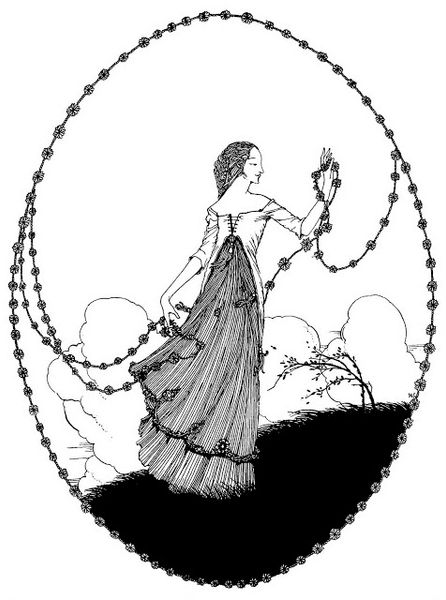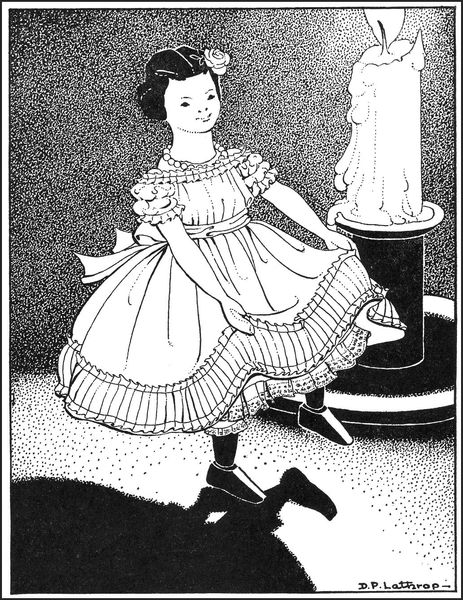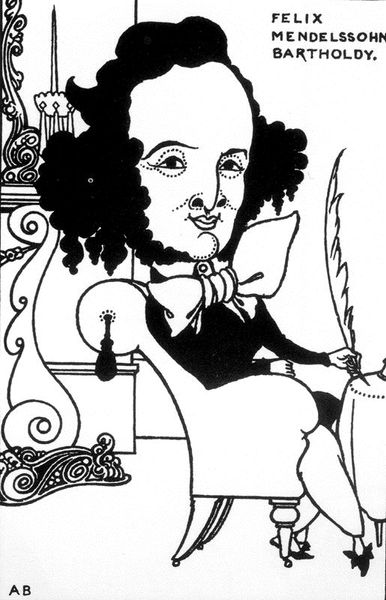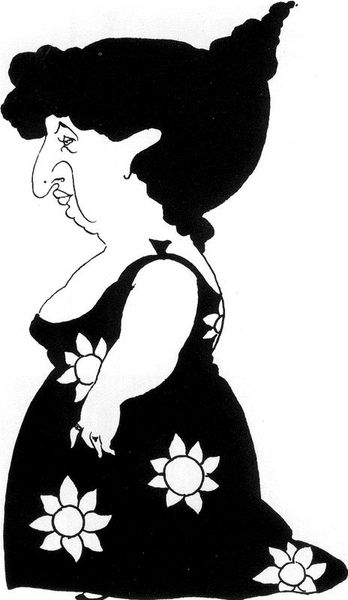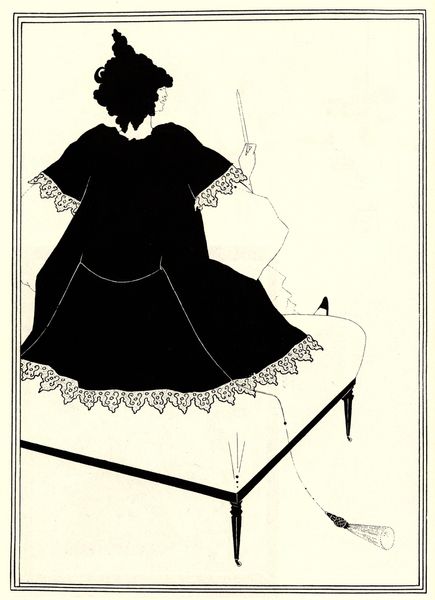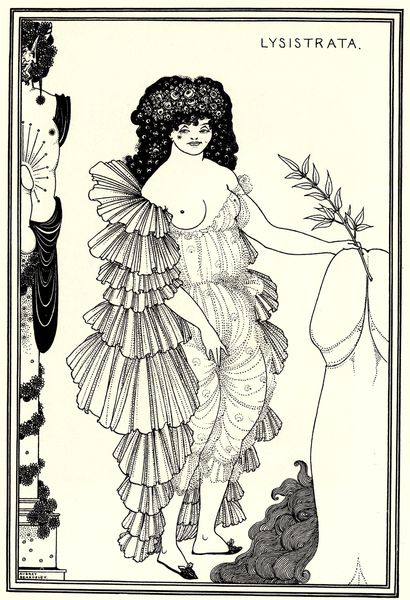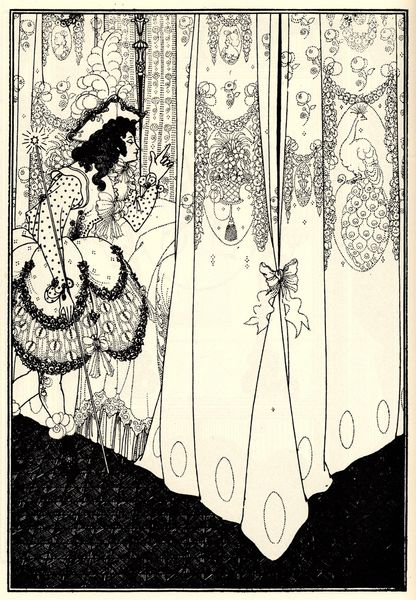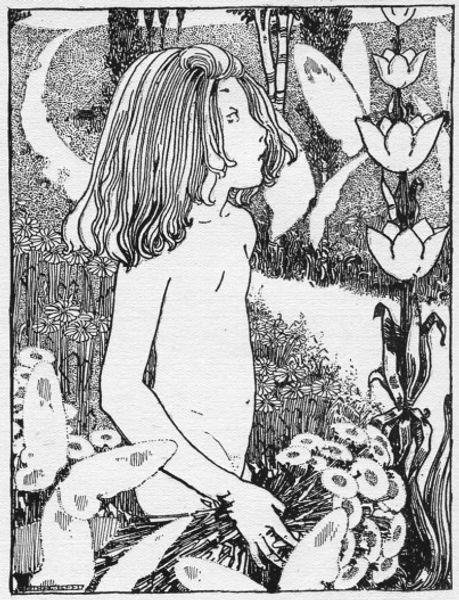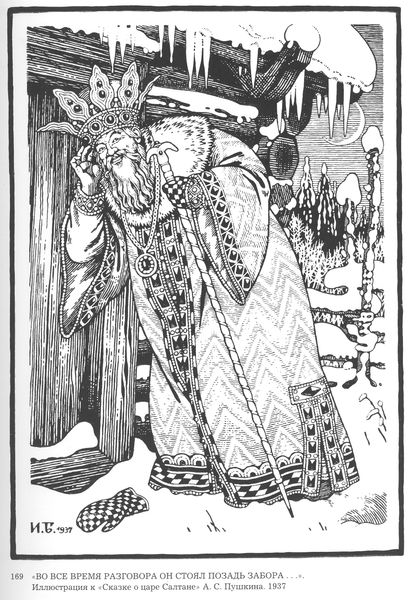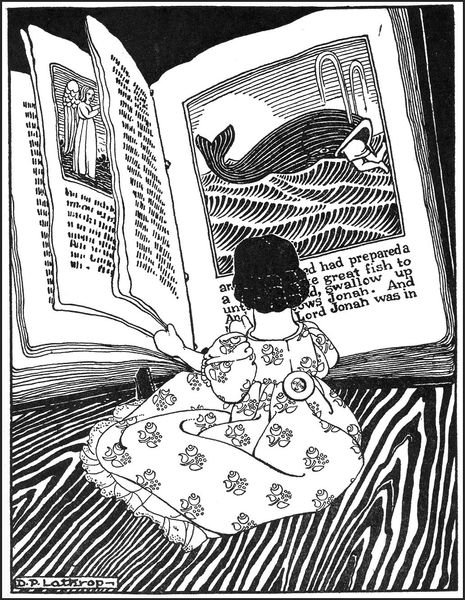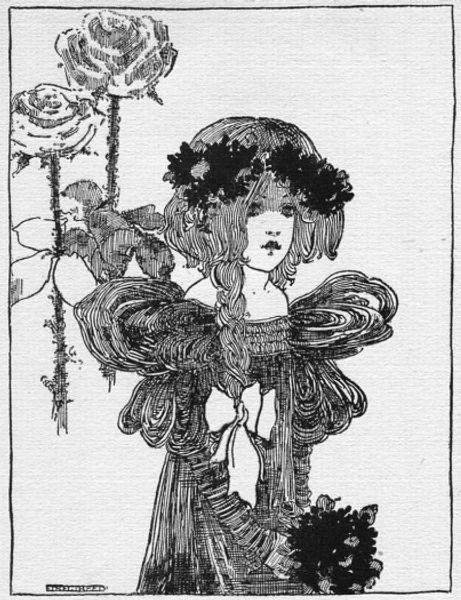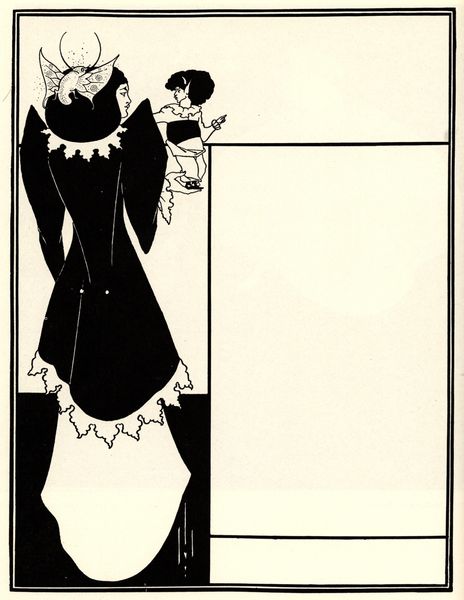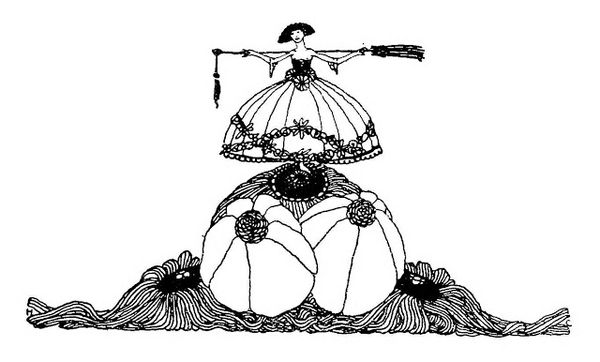
drawing, paper, ink
#
portrait
#
drawing
#
art-nouveau
#
figuration
#
paper
#
ink
#
monochrome
Copyright: Public domain
Curator: I'm immediately struck by the sheer whimsicality of this piece. It feels light, buoyant, and joyous. Editor: That's certainly a fitting description. This is Harry Clarke's "The Year's at the Spring," crafted around 1920 using ink on paper. Note the incredible linearity; the meticulous balance of positive and negative space is what truly commands attention here. Curator: Absolutely. The linear precision carves out a space that almost suggests Art Nouveau elegance. Do you see echoes of societal shifts? Is it simply a decorative figure or a larger embodiment of transition and hope after, say, the First World War? Editor: Indeed, I think the piece's symbols point toward optimism. Clarke, throughout his artistic journey, recurrently incorporates imagery related to regeneration. The flourishing tendrils, suggestive of nascent botanical forms, combined with the light and graceful figure are emblematic of renewal, especially considering this period marked an attempt to come to terms with huge cultural trauma. Curator: I find myself especially drawn to the girl’s costume. While seemingly simple, with those playfully scattered polka dots, what are your impressions about the semiotic relevance of dress as a cultural expression? Editor: Well, the garment’s relative simplicity emphasizes freedom from previous strictures. As fashion transitioned during that interwar period, Clarke's work celebrates that new embrace. Perhaps the overall sense of movement within the form reflects larger societal currents that moved away from former mores. Curator: A clever interpretation. Its deliberate monochromatic treatment allows for the pure expression of form and line, without color distraction. One could say the piece itself embodies a liminal state – standing at the threshold of a future unknown, echoing feelings associated with springtime's uncertainties, while suggesting the allure of new beginnings. Editor: Ultimately, the lasting significance rests in Clarke's refined mastery and insightful understanding of symbolism within a culture eagerly desiring revitalization and advancement. This illustrates that our need to hope is immortal. Curator: I would certainly concur. Its symbolic language offers a perspective that remains as impactful now as it must have been a century past.
Comments
No comments
Be the first to comment and join the conversation on the ultimate creative platform.
